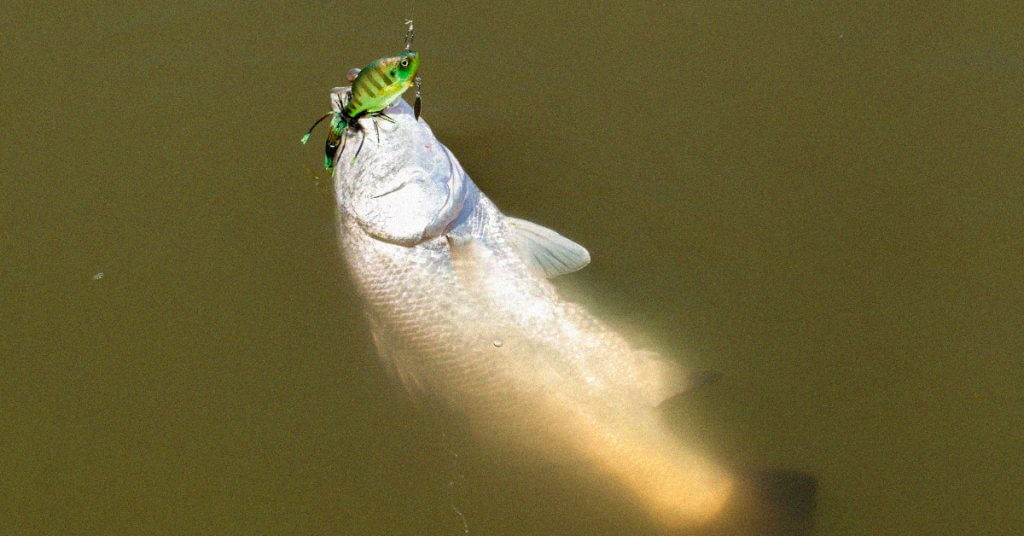Bass jigs are a basic but highly misunderstood lure. A lot of beginner anglers don’t know to properly choose the right jig, and what trailers to use, so they end up quitting on them too early.
I was there plenty of times standing on the boat fishing the wrong jig, at the wrong time, with the wrong trailer.
It took me a lot of trial and error to get it, but thankfully, you don’t have to have the same experience.
In this guide, I want to outline the different types of jigs, when to use them, and even give away some of my favorites.
Anglers.com Community Coordinator Wesley Littlefield breaks down the best bass fishing jigs on the market in this YouTube video.
Types of Bass Jigs
A bass jig is a weighted hook with an eye attached to the top or side of the weight. Some of the hooks have a weed guard attached to them as well.
There are many different bass jig styles that each have their own purpose and application.
Understanding the different types will help you choose the best bass jig for each situation. They all have a time and a place.
Football Jigs

Football jigs are the most common type of jig and you can probably imagine what the head is shaped like. These are designed for hitting rocky bottoms and then retreating towards the surface.
The large head on these provides a lot of extra weight to the lure which makes it ideal for casting and the design creates buoyancy so it sits upright when you leave it alone.
Fishing with a football jig is the least active of the jigging techniques because of the upright floating design. You’ll want to cast it out and let it rest for a bit.
Start jigging, resting, and repeating that process but do so relatively slowly.
I think it’s most beneficial to fish a football jig more like a crankbait than a jig. Throw a craw colored creature bait on there and you’ve got a great presentation.
Flipping Jigs

A flipping jig is another highly common bass jig and one of the other most popular options for largemouth bass anglers.
These have a slightly pointed head with an eye on the top and they almost always come with a fiber weed guard.
These lures are designed for work in cover and they can rip through the weeds without bringing them all home with you.
Keep in mind that flipping jigs do come in various designs so they don’t all have the same head shape. The design on the head will vary based on the manufacturer you purchase it from.
If you’re flipping around hard structure like stumps or docks you’ll want to use a rounder shape because it’ll be easier to pull over branches without getting pinned in between them.
Flipping jigs have a wide assortment of sizes ranging from ¼ ounce all the way up to 1 ½ ounces depending on what you’re after.
You’ll want to cater the size to the conditions, weather, and tackle you’re using.
When you’re working a flipping jig you’ll want to be a little more aggressive than a football jig and twitch it a little harder with a more active presentation.
Cut through weed beds along the shore and don’t be afraid to cast directly into dense vegetation from the shore.
Finesse Jigs
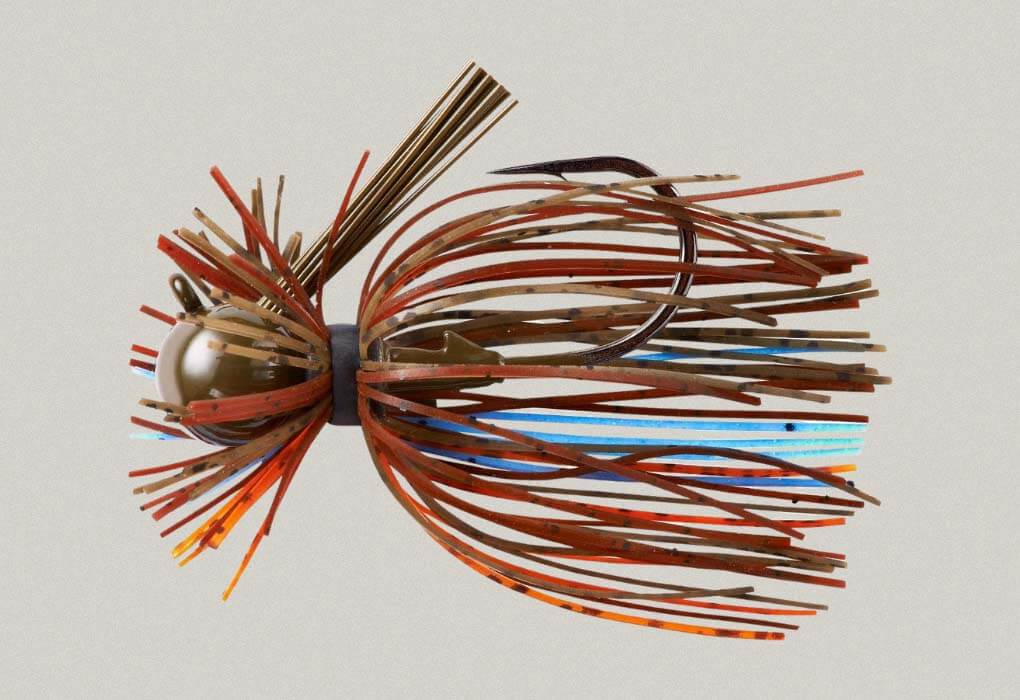
A finesse jig can be a lot of things but simply a sized-down version of it. You can have a football head, pointy head, round head, and a hair jig designed finesse jig. It’s all about the size.
The main reason for finesse jigs is due to conditions.
If you’re fishing when there’s a lot of pressure, during a cold front, in shallow water, or in extremely clear water conditions, this is where finesse jigs come in handy.
Have you ever gone to a popular lake to find that there’s 50,000 people there fishing and you know darn well you don’t have a chance to catch anything?
Get a finesse jig for this situation.
I had a situation like this last Father’s Day where it was super windy and there were boats and people fishing the bank all over the place at a local state park that’s known for being overfished.
Your best choice during a time like this is to pull out a light colored ¼ ounce swim jig and work it consistently in the shallow water.
Swim Jigs
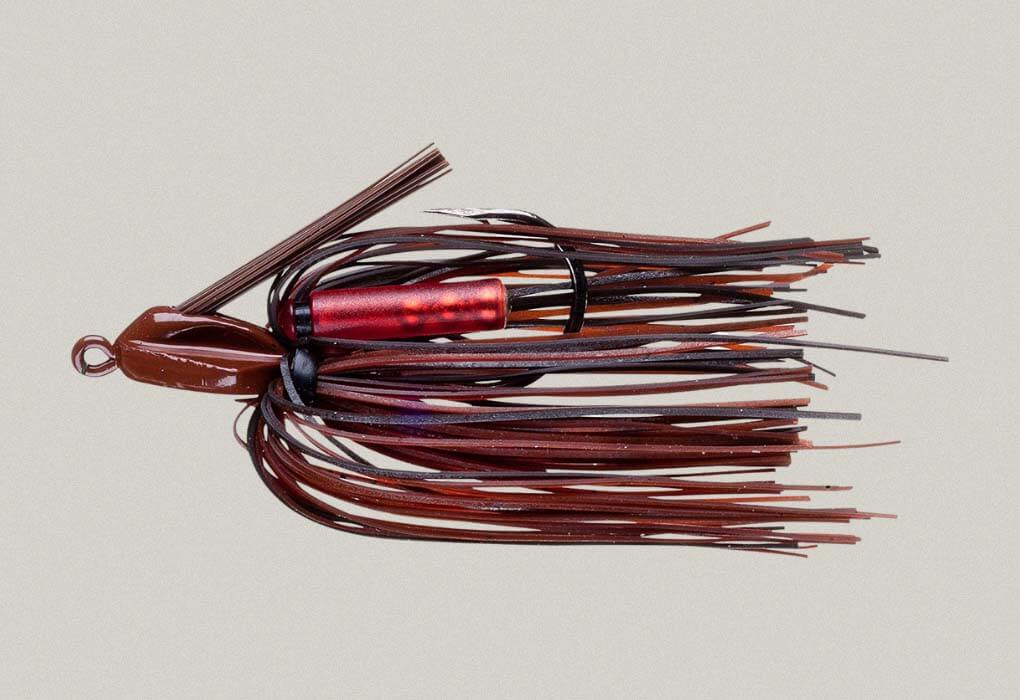
We’re coming into a gray area now where all the lures start to blend together. The main thing that separates a swim jig from some of the others is the overall profile.
A swim jig is a lot shorter with a much thinner skirt. These are the best jigs for prioritizing a trailer rather than the jig itself.
These designs make this the perfect lure for covering a lot of water.
If you’re fishing in a spot you’ve never been before and you’re simply trying to feel it out, a swim jig with a double paddle tail trailer is a great choice.
Swim jig heads are typically pointed with an eye on the top so they work more like a spinnerbait. You’ll actually pull them head first with the weed guard sliding through vegetation.
How to Choose the Best Jigs for Bass Fishing
We’ve talked about it a little but choosing the best bass jigs is simple once you understand the different types and how to use them.
You’ll want to use a football jig when fishing hard structures like rocks and stumps.
These heads aren’t the best for vegetation because they’ll get caught easier and the design helps you coast over and around hard structures.
Football jigs are also great for long casting because they hold a lot of weight and they fish upright in the water which is better in open and deeper water.
Implementing a slow dragging presentation is the best with these and you don’t need to stress about the trailer. Go with something small that doesn’t interfere with the presentation.
If you’re fishing in the weeds, you’ll want to choose a swim or flipping jig because they’re designed with a weed guard and are better equipped to fish through vegetation.
On the contrary, these aren’t as good for fishing around hard structure because the sharp design is more likely to dig into a stump or gravel pile and get stuck.
Within these decision factors you also have to consider fishing conditions such as pressure, weather, and seasonality.
If you’re fishing in less than desirable conditions such as cold weather or high fishing pressure, size down your lures and reduce the intensity of your trailer’s action.
For example, the Yum Money Craw is an active presentation because it’s soft and it wiggles a lot when you work it.
The Cowboy Creature Bait is a bit more subtle because it has a less flexible body with the legs serving as the only action.
How to Choose a Trailer for Your Jig
To expand upon a previous point, bass jigs are some of the only lures that require you to choose another component to complete the lure.
The trailer you choose will have a huge impact on the overall behavior of your lure. The trailer is designed to mimic a baitfish in both presentation and appearance.
Some trailers that have a hard plastic won’t move around much and will instead look like a baitfish where soft plastic trailers with claws and tails will mimic a crawfish.
Best Trailers for Bass Fishing Jigs
You basically have four choices for jig trailers, based on how you’re fishing the jig and the current conditions.
Craws
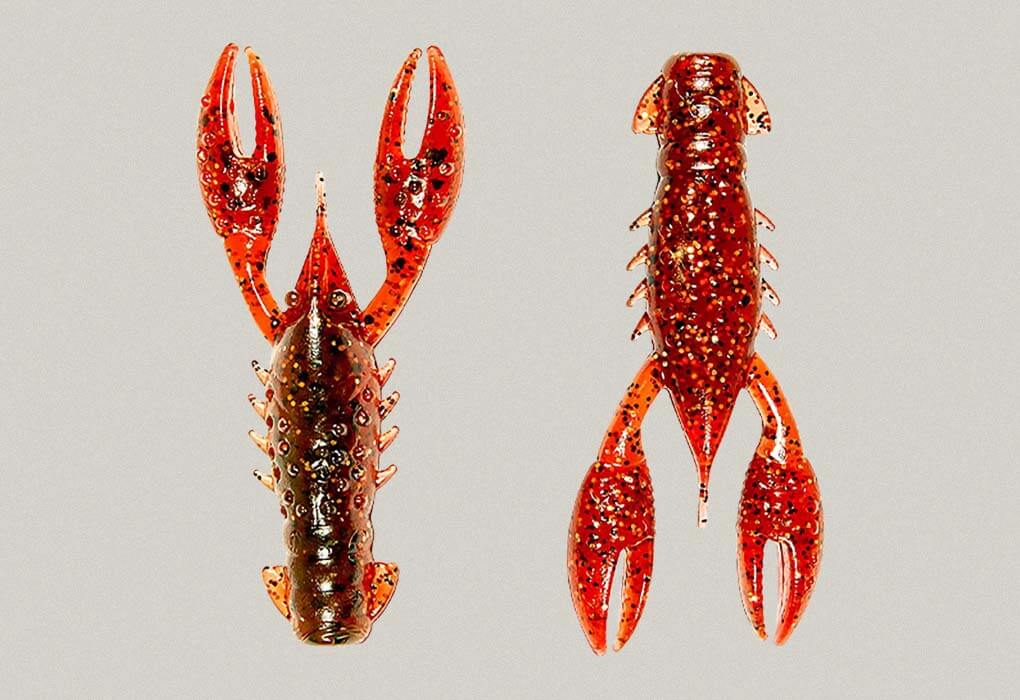
Craw trailers are one of the most popular options and they’re obviously designed to imitate a crawfish.
With the Z-man Hot Craws as an example, you can see that these are made of a hard plastic so they’re a subtle presentation but they certainly make up for it in size.
The lifelike design is great for working along the bottom but you can also work it along rocky ledges as these specific options are naturally buoyant.
Grubs
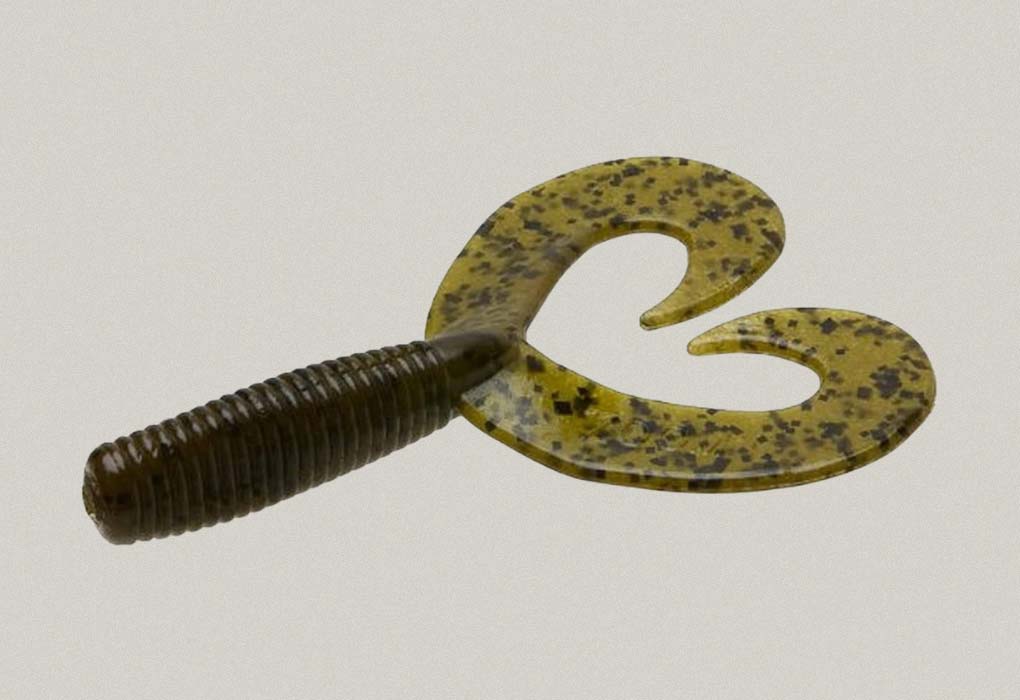
Grubs are a basic trailer that we’ve all likely used before. Twin tail grubs like the Zoom Fat Albert are most popular because single tail grubs don’t create as natural of a presentation as a trailer.
Chunks
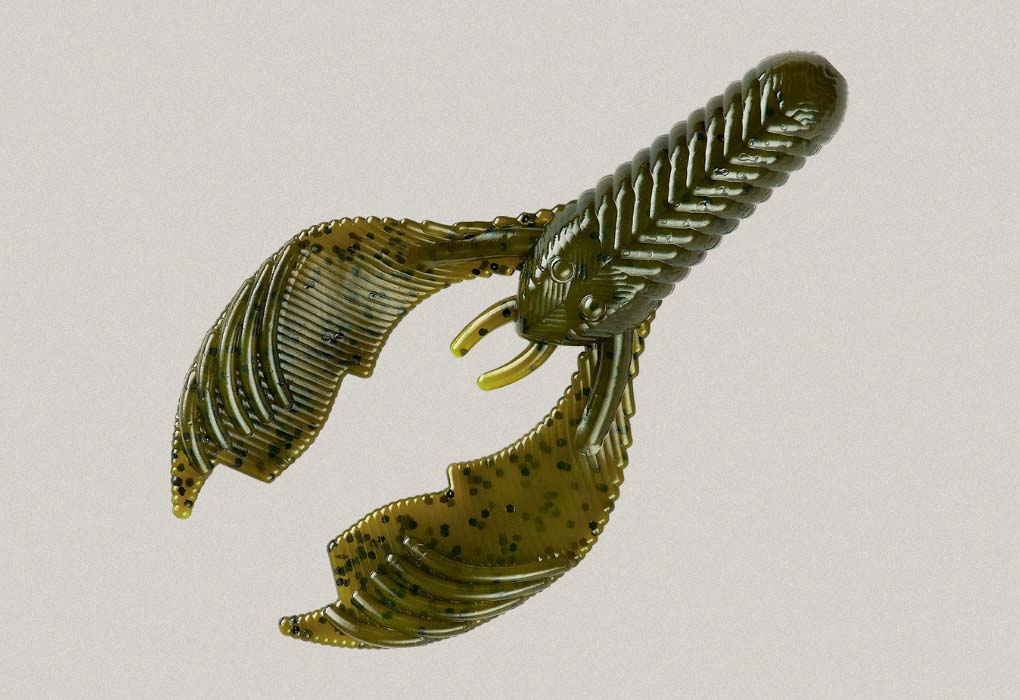
Chunks are a hybrid of both a craw and a grub. They’re designed to be smaller and more subtle than a craw but more aggressive than a grub. You can use these with a variety of bass jigs and they work well with an active presentation.
YUM makes a whole bunch of these with their Craw Chunk being the most popular. You can see that it’s basically the same as a crawfish but a bit smaller making it a better choice as a swim jig trailer.
Swimbaits
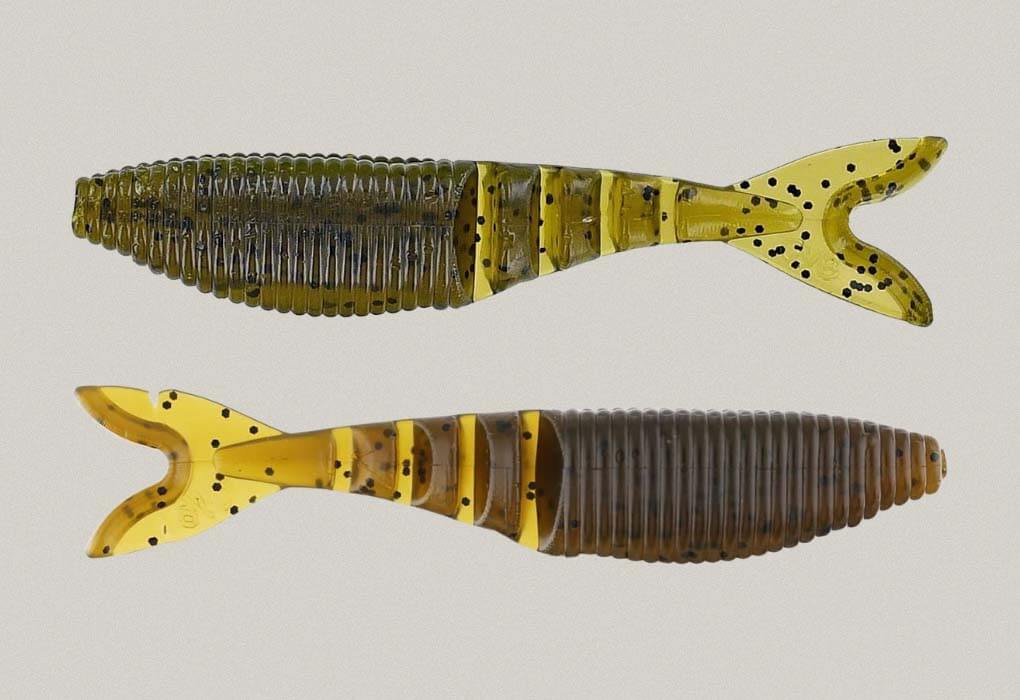
Swimbaits are a highly slept-on trailer in my opinion and I don’t know why more people don’t consider them.
A Yamamoto segmented tailed swimbait is a great choice for a number of situations. It’s subtle, realistic, and an excellent option if you’re fishing in slightly stained conditions.
Not to mention the fact that a number of swimbaits come with salt-impregnated bodies or rattles that can add a whole lot to your presentation if you’re feeling aggressive.
I’d recommend having some swimbait trailers in your arsenal as well.
Choosing the Best Color Largemouth Bass Jigs
Color is always an important factor when choosing a lure. The color you choose should be based on weather factors, fishing pressure, and even the season you’re fishing in.
Here are some tips to help you choose the best color bass jig.
Water Clarity
If the water is murky you’ll want to go with a more subtle color because you’re not getting as much light reflection and the bass aren’t using their vision to hunt at this point.
This is quite different from lures like chatterbaits and buzzbaits that make a lot of noise. You don’t get that noise with jigs so you just want to play into the current surroundings.
Season
When you’re fishing in the Spring, this is when bass spawn. During this time, they’re known to feed on crawfish in most of the country.
As a result, you want to use watermelon or off red colored lures to imitate the crawfish presentation.
If you’re fishing in the fall, bass are typically feeding more aggressively on baitfish. This is where a bluegill, shad, or perch presentation will come in handy.
Using a swimbait trailer could be beneficial during this time.
Three Top Jigs For Bass
Here are three of my favorite bass jigs in no particular order. They each have their own reason for being on this list.
Booyah Boo Jig
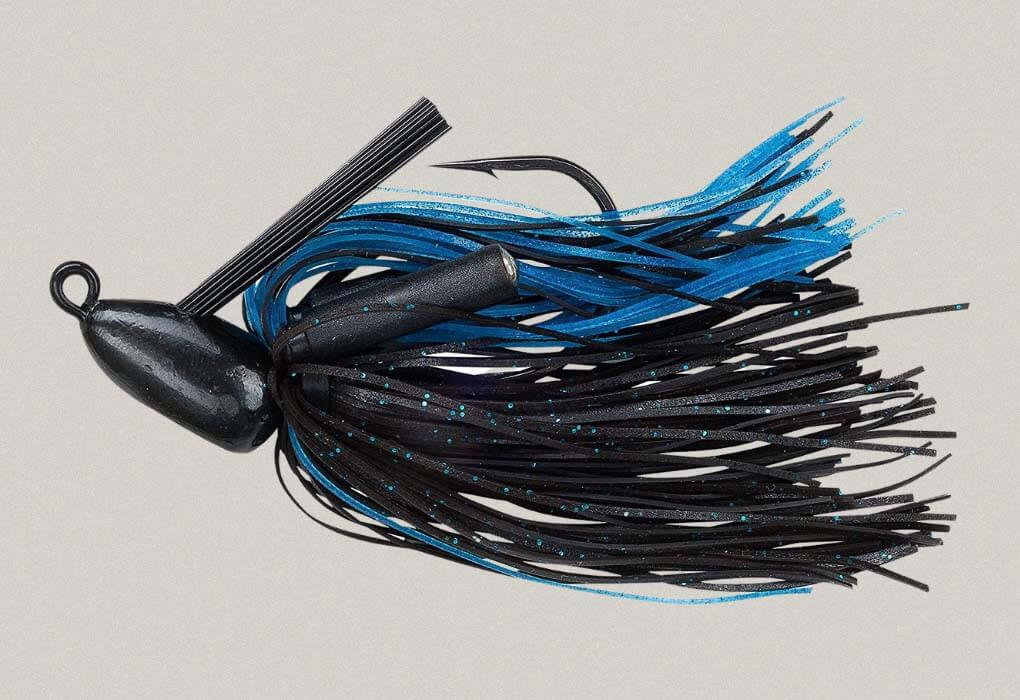
Booyah baits make some of the best lures in general but they really excel at making jigs. This jig comes in sizes ranging from ¼ ounce to ⅜ ounce and it features six different colors ranging from dark to light.
It has a sharp pointed jig head with a great weed guard and platinum nickel hook. This finesse jig is light and designed to cut through weed beds.
I’d pair this with a small creature bait and fish it along the shore.
Strike King Tour Grade Skipping Jig
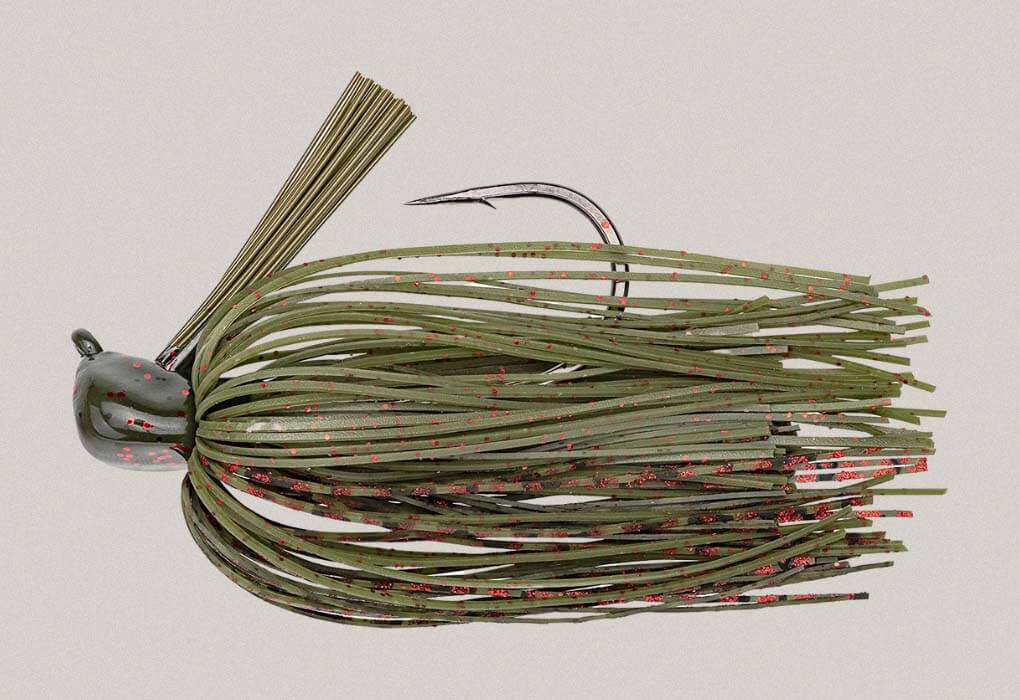
Pro Angler Andy Montgomery designed this skipping jig with a flat head on one side designed to skip over weed beds into heavy cover. It comes with a dense skirt and screw keeper that is there to prevent your trailers from falling off.
This lure was designed specifically to help increase your catch rate and it’s one of the all time most popular jigs used by professional anglers.
War Eagle Heavy Finesse Jig

This is a contradictory lure because you wouldn’t think heavy and finesse should belong in the same product name. In this case, they do.
The reason this rig is so successful is because it combines elements of high pressure fishing with heavy enough tackle to ensure you’re pulling lunkers.
The War Eagle features a ½ ounce and ⅜ ounce size and it comes with a thick weed guard that helps you work through dense cover.
The black nickel hook paired with the unique skirt design generates easier and more effective hooksets.
This is a great jig for when the bite is tough because it will get a lot of attention and still be able to pull larger fish.
Frequently Asked Questions
What jig is best for bass?
The best jig for bass is the Booyah Boo Jig because of its ability to work in dense cover.
What color jig is best for bass?
The best color jig for bass is usually something that imitates a crawfish or creature. These colors include pumpkin, watermelon, and other natural tones.
What does a bass jig imitate?
Bass jigs imitate crawfish and baitfish. It’s a versatile lure that can imitate anything depending on what type of trailer you use.
Final Thoughts
I hope you enjoyed this dive into bass jigs and hopefully you have a better understanding of what these are and how to use them.
There are many different types of bass jigs and they each have their time and place on the water.
I highly recommend keeping at least two of the three above in your tackle box at all times.
If you have experience with any of these jigs, be sure to help out the community by leaving a comment below with your favorite tips. Good luck out there!




